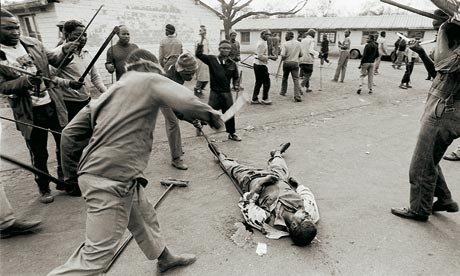Hi everyone! How are we this fine Sunday?

I've had an interesting week, not least as I was interviewed by the ABC (live! zomgsh) on my piece in the Griffith Review. Check out the video HERE!
How many times do we have to say this? The use of the word "illegal" is ignorant and mischievous!
[box] While the Coalition may have hoped to score political points with the reappearance of its "illegal boats" billboard this week, it has shone a spotlight on its feeble grasp of international law. Opposition Leader Tony Abbott is wrong to say that the Refugee Convention says asylum seekers are "illegal". [/box]
On the topic of the Boston Marathon Bombings: why is it considered terrorism and Aurora and Sandy Hook not?
Wise words on Bahrain from an unlikely source: Joe Saward, the F1 journalist...
[box] Some would argue that it is necessary to remove all religion from the political process and that until Bahrainis stop thinking about being Shias or Sunnis there cannot be a truly democratic country. If you go back in history you see many nations going through similar religious troubles, notably in Europe in the 16th and 17th Centuries when Catholics and Protestants murdered one another in large numbers. We do not live in a perfect world, but sport is one of the few ways in which nations can unite, transcending internal divisions and thinking as a group. Thus looking at a much bigger picture one has to say that the Grand Prix is a good idea for Bahrain. No doubt some will disagree…[/box]
Finding a way of being a girl that doesn't hurt... again going to a question of where the feminist movement is?
Again on the issue of feminism...Five Myths about Feminism. How do you feel about the label?
A massive discussion about social media's do's and don'ts. Really interesting - how do you use social media, as an individual and as a company?
Seth Godin asks the question: What is your critical mass?
[box] If your idea isn't spreading, one reason might be that it's for too many people. Or it might be because the cohort that appreciates it isn't tightly connected. When you focus on a smaller, more connected group, it's far easier to make an impact.[/box]
This is old news but I think I forgot to link it in my hubris - the first female, Muslim MP in Australia!
I am a sucker for beautiful photography (who isn't), and beautiful photography of beautiful machines? How could I resist...
Oh and don't forget to check out my posts this week; one on Global Migration and Identity and the other on Stirling Moss's comment's on women in F1. If you want to keep in touch more regularly, you can always check out my Facebook page!






